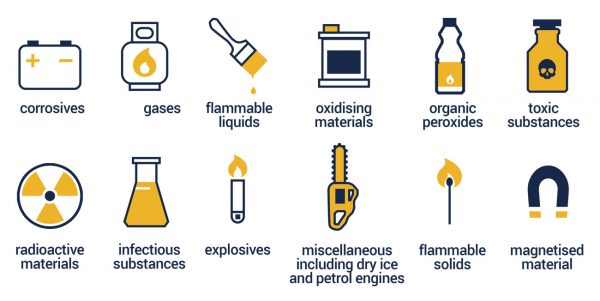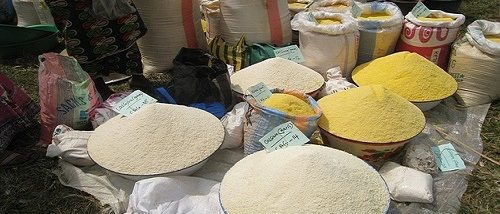How To Handle Dangerous And Restricted Items When Traveling By Air
What is considered a safe item to travel with when a passenger wants to travel by air? What objects can you travel with on board the aircraft or which do you have to check-in? Or have as carry-ons?
These questions are not difficult to guess an answer to but it is still important to highlight some of these objects you can or cannot transport via air.
When embarking on a journey by air, it is important to know that it is the travelers’ responsibility to make sure what he/she is packing doesn’t pose a risk to other passengers.
In airports across the country, there has been several cases of security personnel stopping one or two people embarking on a flight and asking them to drop some items deemed dangerous for air travel.
Dangerous goods are items or substances that when transported by aircraft are a risk to health, safety, property or the environment and they vary from the commonest items to the most conspicuous.
Items that are classified as dangerous and will not be allowed into an aircraft include obvious things, such as: explosives, radioactive materials, flammable liquids, dangerous or volatile chemicals, strong acids, compressed gases, poisons and aerosols.
Everyday items that can cause problems include firearms, knifes, toiletries, aerosols, tools and lithium batteries.
Anywhere in the world, it is frowned upon to take sharp objects on board an aircraft in a carry-on bag. It is a no-brainier that objects or weapons with sharp edges like axes, ice picks, razor blades, box cutters, hatchets , arrows, darts, swords, Sabres, scissors, harpoons cannot be brought onboard the flight and this is for safety reason. However, here is a detailed list of things to avoid when travelling by air.
Before you fly
Before you head to the airport, you should take the time to get familiar with common security rules such as what kinds of identification you may need, and basic baggage rules such as what valuable or critical personal items should always be in your carry-on bag and not in your checked luggage.
Going through airport security without any extra delays will be a lot easier if you avoid taking banned or restricted items through the security checkpoint. While the following descriptions of banned or restricted items are based on TSA rules and guidelines, most countries have similar restrictions.
Banned items
The following items are completely banned from aircraft, and should not be brought to the airport:
Explosive and incendiary materials
Flammable items
Gasses and pressure containers
Matches
Oxidizers and organic peroxides
Poisons
Infectious materials
Corrosives
Organics
Radioactive materials
Magnetic materials
Marijuana (cannabis)
Also, if you are in any doubt about whether your item may be hazardous, you should bring it to the attention of either your airline or the security screener. While explosives are banned, passengers can follow specific procedures to carry firearms and some kinds of ammunition in checked baggage.
Items restricted to checked bags
The Transportation Security Administration (TSA) has prohibited the following items from airplane cabins and carry-on baggage but may (with some exceptions) be carried only in checked baggage:
Stick or club type sporting goods
Firearms (including firearm replicas and firearm parts) and ammunition
Knives and cutting instruments
Paintball guns
Power tools and larger hand tools
Dry ice (frozen carbon dioxide)
Items allowed in your carry-on bags
There are a number of items that could be considered hazardous or dangerous that are actually allowed in the passenger cabin, including your carry-on baggage:
Non-rechargeable batteries
Spare rechargeable batteries (there are additional restrictions based on the capacity of the battery)
Electronic cigarettes and vaping devices (unpowered)
Small hand tools (less than seven inches or 18 cm in length) that don’t have sharp cutting edges
Matches (other than strike anywhere matches) and common cigarette lighters
Scissors with a cutting edge less than four inches (10 cm)
Don’t put these items in checked luggage
There are many other kinds of items that you should only have in your carry-on bag, or on your person, especially if it is hard to replace, very expensive, or necessary for your health and well being. Examples include:
Money related items
Computers and personal electronic devices
Passports and other identification
Jewelry, expensive watches, precious metals, and valuables
Medications and medical devices.
Difficult to replace items like keys; eyeglasses; mail, documents, and devices with electronic data.
Restrictions on liquids, gels, and aerosols
Most countries have restricted what liquids and gels a passenger may have in the passenger cabin or in the secure area of the airport. In the US, containers holding liquid and gel products must have a capacity of no greater than 3.4 fluid ounces (100 ml). Also snow globes and similar liquid-filled decorations, no matter what size, can only be carried in checked luggage.
Exceptions to liquid, gel and aerosol rules
There are a number of exceptions to the restrictions on liquids, gels, and aerosols. Most of those revolve around medical items and food items intended for small children.
All over-the-counter and prescription medications, including insulin and diabetes medical supplies.
Items needed for passengers with a disability or medical condition.
Items used to augment the body for medical or cosmetic reasons such as mastectomy products, prosthetic breasts, bras or shells containing gels, saline solution, or other liquids.
Food items like baby formula, breast milk, juice or water for a traveling infant small child.
Duty-free items purchased at the airport.
Flying with cash
There are two things you should consider when flying with cash or other financial instruments, loss of your cash and dealing with legal issues. There are some basic things that you can do minimize these two kinds of risks.
Protecting your cash from loss
Never put cash or financial instruments in a checked bag.
Keep your cash out of sight as much as possible
When passing through security, keep your eyes on the bag with the cash.
Rules for batteries
The FAA allows passengers to have in their carry-on bags most batteries commonly used in personal electronic devices. Batteries in checked luggage may have additional restrictions. Below is a brief overview of battery rules.
Batteries allowed in carry on baggage include:
Common batteries such as AA, AAA, C, D, 9-volt, and button sized cells used in consumer electronic items including handheld games and hearing aids.
Spare batteries for personal electronic devices.
Small lithium metal batteries commonly used in cell phones, handheld electronic games, and laptop computers.
Most batteries allowed in carryon baggage are also allowed in checked baggage. Exceptions include spare (uninstalled) lithium batteries. Battery-powered devices should be protected from accidental activation.
Wheelchair batteries
Any type of battery used to power a scooter or wheelchair is allowed. If you are packing a spare battery for a scooter or wheelchair, contact your airline to make sure that the battery is properly packed for travel.
Flying with drones
When passengers fly with drones either in carry on or checked bags, they must follow both airline rules and FAA rules, especially the rules regarding rechargeable drone batteries.
Restrictions on duty free items
If your duty-free purchase of liquor, perfume, cosmetics, or any other item contains liquids, gels, or aerosols; and the container is larger than 100 ml (3.4 fluid ounces), you have to follow specific procedures to ensure that your items will not be confiscated.
Rules vary by country, but in general, one of the following will apply to you:
If you can put it in a checked bag before passing through airport security, you don’t have to take any precautions.
If you purchased the item after passing through security, and you are on the last leg of your trip, you can put the item in your carry-on bag.
If you purchased the item after passing through security, you are not on the last leg of your trip, and you have to pass through airport security before getting on your next flight (standard procedure if you are entering the US), you may have to place it into a checked bag prior to your next flight.
Additional airline restrictions
In addition to the restrictions of the TSA, your airline may also have restrictions on what is allowed on the airplane. If you are carrying an unusual item, or if you think that an airline may have a restriction, be sure to contact your airline ahead of time, or to contact a representative in the airport. Also, in the event that an airline loses your bags and finds them later, they may have limited luggage shipping options for getting your bags back to you, especially if you are traveling oversea.








